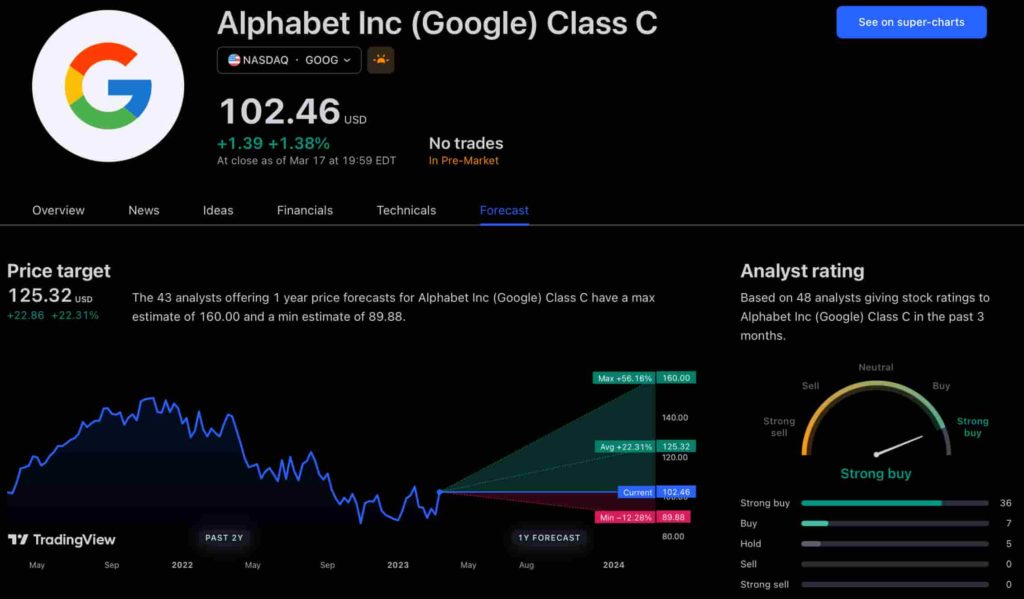The new app is called watchGPT and as I tipped off already, it gives you access to ChatGPT from your Apple Watch. Now the $10,000 question (or more accurately the $3.99 question, as that is the one-time cost of the app) is why having ChatGPT on your wrist is remotely necessary, so let’s dive into what exactly the app can do.
NEWS
WordPress 5.6 Brings the Good, the Meh and the Ugly

WordPress 5.6 has been released with dozens of improvements and new features. Code named Simone (honoring singer Nina Simone), WordPress 5.6 has been met with a positive response, possibly because it didn’t break anything.
The substance of what’s new in WordPress 5.6 can be described as mostly good, some meh and one issue that’s ugly.
The Good
Enable jQuery Migrate Plugin Updated
The last two updates were somewhat rocky due to millions of websites breaking or accidentally updating with a beta version of WordPress.
The biggest potential issue was with the jQuery Migrate deprecations and updates.
WordPress 5.6 managed to avoid the legacy jQuery plugin issues experienced with the WordPress 5.5 update in August 2020. That was the update that caused websites to stop functioning in myriad and unexpected ways.
The reason those issues were avoided this time around is because WordPress 5.6 updated the Enable jQuery Migrate plugin in order to avoid a repeat of websites crashing.
When the plugin is active and the publisher is logged in, the plugin will detect outdated jQuery and log it, presenting a display at the top of page to signal the problem.
The plugin detects jQuery issues from page to page as the pages are served to the publisher as they browse the site.
There is an option to perform similar logging using pages served to users are browsing the site, but WordPress warns that this could create significant server load and recommends not turning it on.
There is a deprecation log page that shows the plugins responsible for the warnings. After updating a plugin the publisher can clear the old log and resume browsing again to see if the Enable jQuery Migrate plugin detect additional issues.
“With the above in mind, the Enable jQuery Migrate Helper plugin was updated for the release of WordPress 5.6, this provides a temporary downgrade path to run legacy jQuery on a site when needed.
The reason this is considered a temporary solution, is that the older version of jQuery no longer receives security updates, and the legacy version will not be patched manually if anything should occur that warrants updates to it.”
The Meh
WordPress 5.6 is shipping with their first version of WordPress that is (somewhat) PHP 8 compatible, the newest version of PHP that was released in November. However, this compatibility is meant to be regarded as beta compatible.
Because the WordPress PHP 8 compatibility news manages to be both good and less than good news it ends up being… meh.
As noted in the official guidance of WordPress 5.6 and PHP 8 Compatibility:
“WordPress Core aims to be compatible with PHP 8.0 in the 5.6 release (currently scheduled for December 8, 2020).
…Significant effort has been put towards making WordPress 5.6 compatible with PHP 8 on its own, but it is very likely that there are still undiscovered issues remaining.”
Publishers should test first before upgrading their version of PHP because themes and plugins at this point in time will very likely not be ready for PHP 8.
That’s why WordPress’ announcement framed PHP 8 compatibility as one of the first steps, because of potential compatibility bugs and because themes and plugins may not be compatible yet.
According to WordPress:
“5.6 marks the first steps toward WordPress Core support for PHP 8.”
The Ugly
One of the new features in version 5.6 that the WordPress team are rightfully proud of also contains a potential downside to it that if fully exploited could lead to a full site takeover.
WP 5.6 introduces the REST API authentication with Application Passwords Feature
The App Passwords Feature allows third party apps to connect to your website and add functionality.
“Thanks to the API’s new Application Passwords authorization feature, third-party apps can connect to your site seamlessly and securely. This new REST API feature lets you see what apps are connecting to your site and control what they do. “
However, according to WordPress security plugin publisher Wordfence, a social engineering attack could be used against a site administrator to obtain administrator credentials.
Social engineering is a hacking method that relies on tricking into providing information or access.
For example, Phishing is a form of social engineering where an attacker may email a victim posing as their bank, requesting that they reset their login credentials.
A link in the email leads to a copycat site that resembles a bank website where the victim enters their user name and password which is then harvested to obtain access to their banking account.
Wordfence describes a social engineering attack where a criminal could create an app that impersonates a trusted App, leading the site publisher to issue a password and allow a secure connection to their website. Wordfence describes the complexity of this attack as “trivial.”
According to Wordfence:
“An attacker could trick a site owner into clicking a link requesting an application password, naming their malicious application whatever they wanted…
Since application passwords function with the permissions of the user that generated them, an attacker could use this to gain control of a website.”
Wordfence produced a video describing and demonstrating the potential for a social engineering attack compromising the new Application Passwords Feature:
Wordfence Description of WordPress Application Passwords Feature Vulnerability to Social Engineering
WordPress 5.6 Overview
WordPress 5.6 is largely a success. There’s much that is so right with it. While it’s not a major advance it does have incremental improvements into site design functionality and improvements to functionality.
That this release manages to avoid the drama of the last two release makes this update a win considering there’s still a few weeks left in 2020.
Citation
WordPress 5.6 Warnings, Announcements and Documentation
Wordfence article:
WordPress 5.6 Introduces a New Risk to Your Site: What to Do
Official Announcement: WordPress 5.6 “Simone”
Version Documentation WordPress 5.6
Handling potential jQuery Issues in WordPress 5.6
Facebook Faces Yet Another Outage: Platform Encounters Technical Issues Again

Uppdated: It seems that today’s issues with Facebook haven’t affected as many users as the last time. A smaller group of people appears to be impacted this time around, which is a relief compared to the larger incident before. Nevertheless, it’s still frustrating for those affected, and hopefully, the issues will be resolved soon by the Facebook team.
Facebook had another problem today (March 20, 2024). According to Downdetector, a website that shows when other websites are not working, many people had trouble using Facebook.
This isn’t the first time Facebook has had issues. Just a little while ago, there was another problem that stopped people from using the site. Today, when people tried to use Facebook, it didn’t work like it should. People couldn’t see their friends’ posts, and sometimes the website wouldn’t even load.
Downdetector, which watches out for problems on websites, showed that lots of people were having trouble with Facebook. People from all over the world said they couldn’t use the site, and they were not happy about it.
When websites like Facebook have problems, it affects a lot of people. It’s not just about not being able to see posts or chat with friends. It can also impact businesses that use Facebook to reach customers.
Since Facebook owns Messenger and Instagram, the problems with Facebook also meant that people had trouble using these apps. It made the situation even more frustrating for many users, who rely on these apps to stay connected with others.
During this recent problem, one thing is obvious: the internet is always changing, and even big websites like Facebook can have problems. While people wait for Facebook to fix the issue, it shows us how easily things online can go wrong. It’s a good reminder that we should have backup plans for staying connected online, just in case something like this happens again.
NEWS
We asked ChatGPT what will be Google (GOOG) stock price for 2030

Investors who have invested in Alphabet Inc. (NASDAQ: GOOG) stock have reaped significant benefits from the company’s robust financial performance over the last five years. Google’s dominance in the online advertising market has been a key driver of the company’s consistent revenue growth and impressive profit margins.
In addition, Google has expanded its operations into related fields such as cloud computing and artificial intelligence. These areas show great promise as future growth drivers, making them increasingly attractive to investors. Notably, Alphabet’s stock price has been rising due to investor interest in the company’s recent initiatives in the fast-developing field of artificial intelligence (AI), adding generative AI features to Gmail and Google Docs.
However, when it comes to predicting the future pricing of a corporation like Google, there are many factors to consider. With this in mind, Finbold turned to the artificial intelligence tool ChatGPT to suggest a likely pricing range for GOOG stock by 2030. Although the tool was unable to give a definitive price range, it did note the following:
“Over the long term, Google has a track record of strong financial performance and has shown an ability to adapt to changing market conditions. As such, it’s reasonable to expect that Google’s stock price may continue to appreciate over time.”
GOOG stock price prediction
While attempting to estimate the price range of future transactions, it is essential to consider a variety of measures in addition to the AI chat tool, which includes deep learning algorithms and stock market experts.
Finbold collected forecasts provided by CoinPriceForecast, a finance prediction tool that utilizes machine self-learning technology, to anticipate Google stock price by the end of 2030 to compare with ChatGPT’s projection.
According to the most recent long-term estimate, which Finbold obtained on March 20, the price of Google will rise beyond $200 in 2030 and touch $247 by the end of the year, which would indicate a 141% gain from today to the end of the year.
Google has been assigned a recommendation of ‘strong buy’ by the majority of analysts working on Wall Street for a more near-term time frame. Significantly, 36 analysts of the 48 have recommended a “strong buy,” while seven people have advocated a “buy.” The remaining five analysts had given a ‘hold’ rating.

The average price projection for Alphabet stock over the last three months has been $125.32; this objective represents a 22.31% upside from its current price. It’s interesting to note that the maximum price forecast for the next year is $160, representing a gain of 56.16% from the stock’s current price of $102.46.
While the outlook for Google stock may be positive, it’s important to keep in mind that some potential challenges and risks could impact its performance, including competition from ChatGPT itself, which could affect Google’s price.
Disclaimer: The content on this site should not be considered investment advice. Investing is speculative. When investing, your capital is at risk.
NEWS
This Apple Watch app brings ChatGPT to your wrist — here’s why you want it

ChatGPT feels like it is everywhere at the moment; the AI-powered tool is rapidly starting to feel like internet connected home devices where you are left wondering if your flower pot really needed Bluetooth. However, after hearing about a new Apple Watch app that brings ChatGPT to your favorite wrist computer, I’m actually convinced this one is worth checking out.
-

 WORDPRESS7 days ago
WORDPRESS7 days ago10 WordPress Influencers to Follow in 2024 – WordPress.com News
-

 SEARCHENGINES7 days ago
SEARCHENGINES7 days agoGoogle Image Search Adds Pixel Level Object Segmentation Animation
-

 MARKETING7 days ago
MARKETING7 days agoFeeling Stuck: What to Do When You Don’t Know What to Do
-

 SEARCHENGINES6 days ago
SEARCHENGINES6 days agoMore Google March 2024 Core Update Ranking Volatility
-

 PPC5 days ago
PPC5 days agoA History of Google AdWords and Google Ads: Revolutionizing Digital Advertising & Marketing Since 2000
-

 PPC6 days ago
PPC6 days agoCompetitor Monitoring: 7 ways to keep watch on the competition
-

 WORDPRESS6 days ago
WORDPRESS6 days agoThrive Architect vs Divi vs Elementor
-

 PPC6 days ago
PPC6 days ago31 Ready-to-Go Mother’s Day Messages for Social Media, Email, & More













